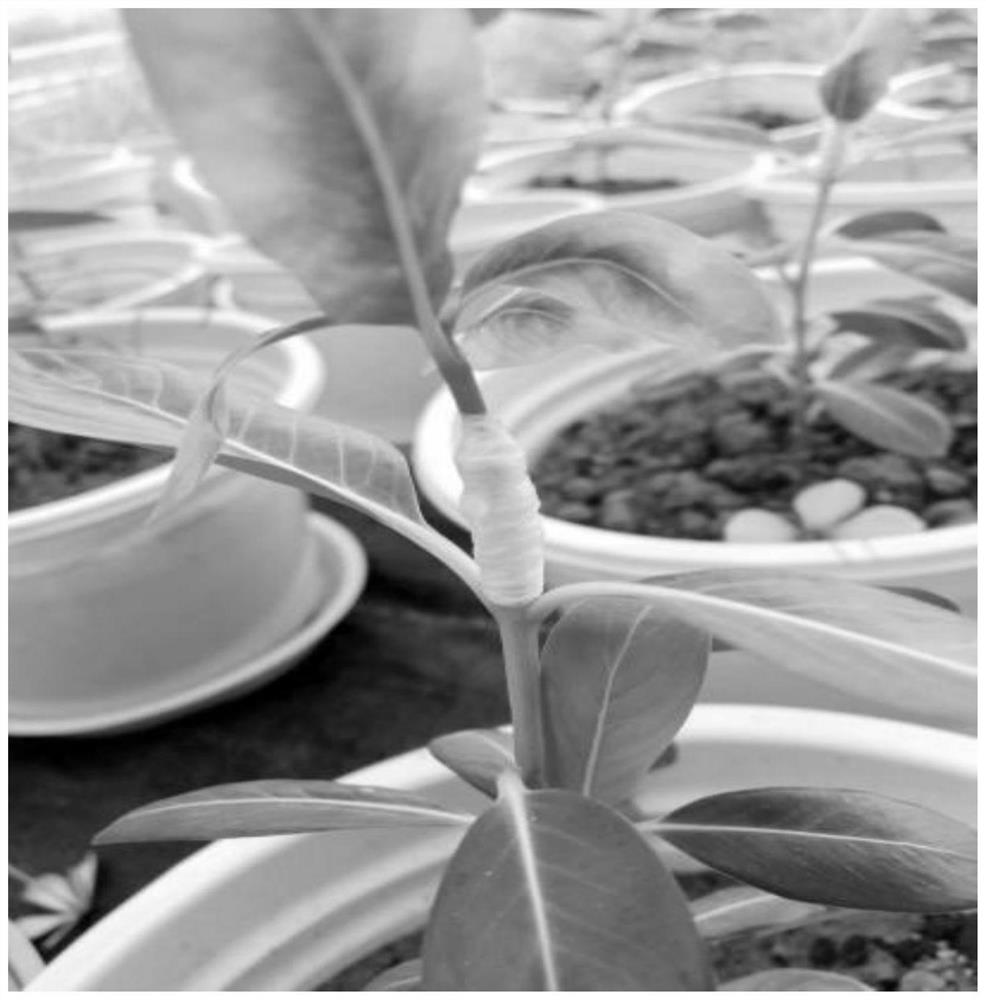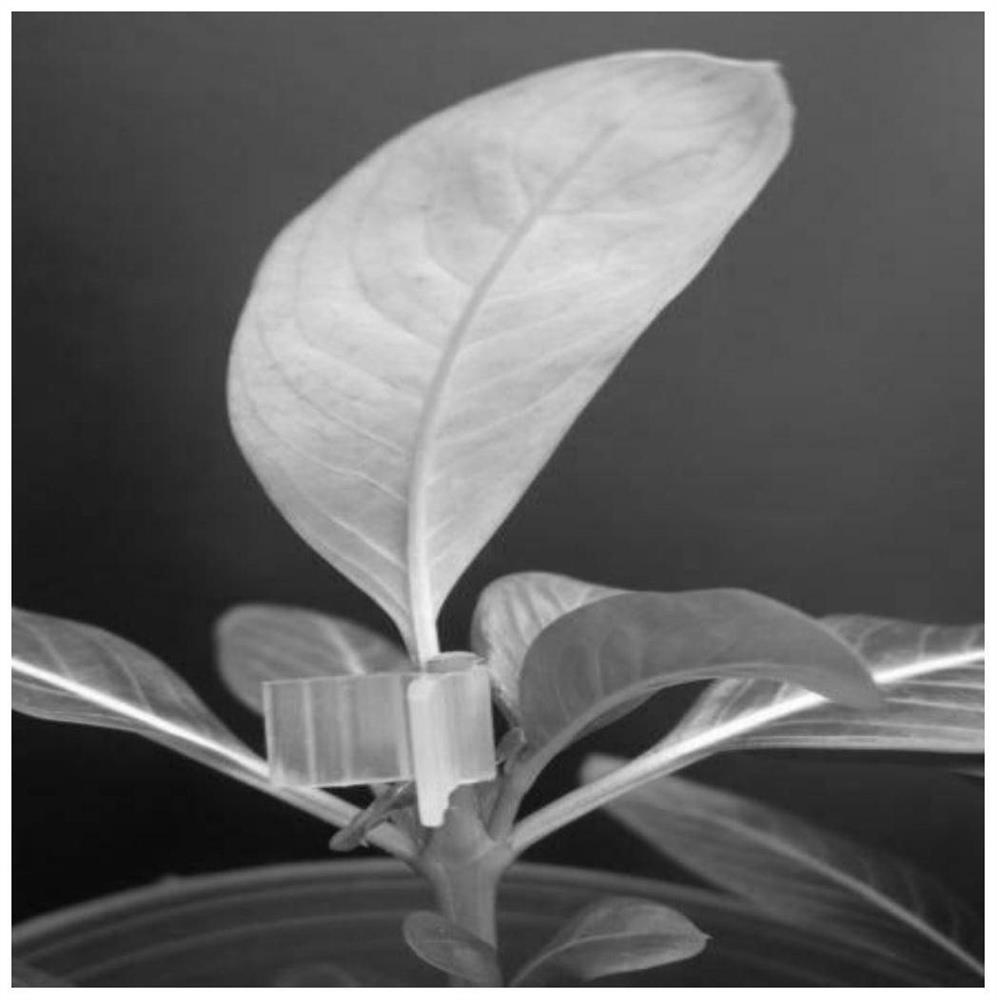Preparation method and application of catharanthus roseus high-susceptibility liberobacter asiaticum model
A technology for citrus huanglongbing and periwinkle, applied in the biological field, can solve the problems of slow grafting, cumbersome, unfavorable drug development and the like
- Summary
- Abstract
- Description
- Claims
- Application Information
AI Technical Summary
Problems solved by technology
Method used
Image
Examples
Embodiment 1
[0049] This embodiment is a method for preparing a high-sensitivity Huanglongbing periwinkle model, the method comprising the following steps:
[0050] (1) Cultivate periwinkle plants: select periwinkle seeds to sterilize, accelerate germination, and germinate and cultivate. During cultivation, select healthy periwinkle plants with good growth and strong branches as stock, remove the terminal buds of stock, and open on stock;
[0051] (2) select the blade or terminal bud of the periwinkle diseased plant that has been infected with Huanglongbing and show yellowing and mottled disease as the scion;
[0052] (3) After inserting the scion leaves into the rootstock incision and aligning them tightly, select a grafting clip suitable for the size and thickness of the branches to clamp from the side where the scion is inserted, so as to avoid crushing the plant or extruding the scion due to too small a grafting clip, or The grafting clamp is too large so that the contact between the s...
Embodiment 2
[0065] This embodiment is a further study carried out at Example 1, mainly for the impact of different grafting materials and grafting methods on the periwinkle infection rate:
[0066] The specific scheme is as follows: in preferred embodiment 1, the periwinkle plants with a disease-susceptibility level III are used as materials for grafting, and the buds and leaves of the periwinkle plants with a disease-susceptible level III are selected as scions, and grafted by membrane grafting and clips way to accomplish the grafting:
[0067] ① Film grafting methods such as figure 2 Shown: Use a scalpel to cross-cut the terminal bud above the first pair of complete leaves on the top of a healthy periwinkle branch and remove it. On the cut surface, cut a joint of about one centimeter from top to bottom at the position of the phloem. The petiole of the scion is cut into a wedge shape at one centimeter and inserted into the cut of the rootstock in time to align and stick tightly, and th...
Embodiment 3
[0081] Through the research of embodiment 1 and embodiment 2, the applicant finds: adopting susceptible leaf periwinkle to be scion grafting periwinkle plant can effectively improve the establishment efficiency of periwinkle high sensitivity Huanglongbing model plant, therefore, the applicant in embodiment 1 On the basis of this study, optimization experiments were carried out on the establishment of periwinkle high-sensitivity Huanglongbing model plants, the details are as follows:
[0082] When the healthy periwinkle plant used as a rootstock grows to 5-9 pairs of true leaves, the top is pinched, and then the leaves of the periwinkle plant with a disease-susceptible level III are used as the scion. When the leaves are taken, the yellowing of the leaves is calculated by the degree of yellowing Area ratio, the ratio of leaf yellowing area is divided into four grades:
[0083] Level 1: 1-25% yellowing area ratio; (such as Figure 4 )
[0084] Level 2: 26-50% yellowing area ra...
PUM
 Login to View More
Login to View More Abstract
Description
Claims
Application Information
 Login to View More
Login to View More - R&D
- Intellectual Property
- Life Sciences
- Materials
- Tech Scout
- Unparalleled Data Quality
- Higher Quality Content
- 60% Fewer Hallucinations
Browse by: Latest US Patents, China's latest patents, Technical Efficacy Thesaurus, Application Domain, Technology Topic, Popular Technical Reports.
© 2025 PatSnap. All rights reserved.Legal|Privacy policy|Modern Slavery Act Transparency Statement|Sitemap|About US| Contact US: help@patsnap.com



